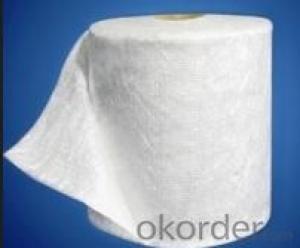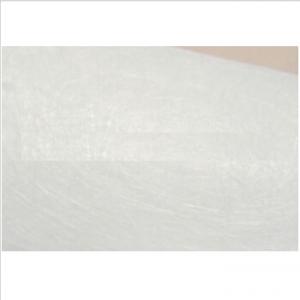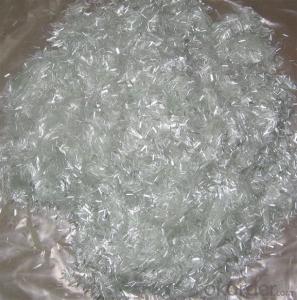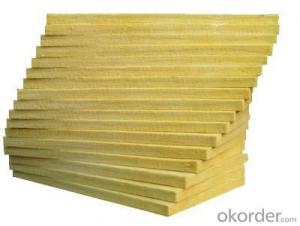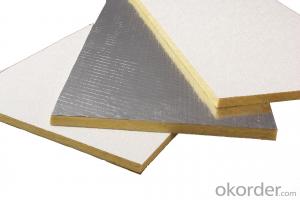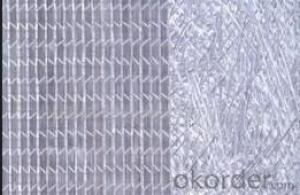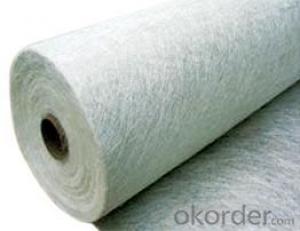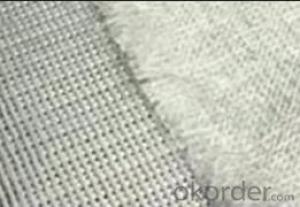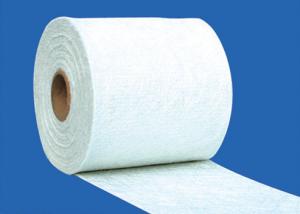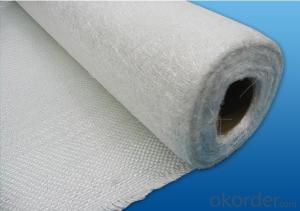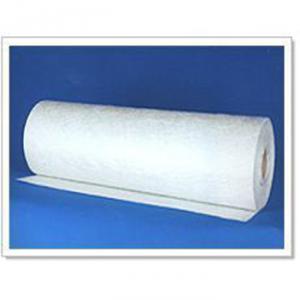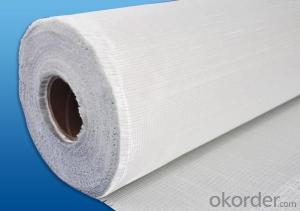Fiberglass Mat Tissue Woven Roving Combo Mat 900gsm, 1600mm
- Loading Port:
- Shanghai
- Payment Terms:
- TT OR LC
- Min Order Qty:
- 5000 m²
- Supply Capability:
- 30000 m²/month
OKorder Service Pledge
OKorder Financial Service
You Might Also Like
Process
Fiberglass stitch combo mat is the mat combining the woven roving and a even layer of chopped strand mat with polyester yarn.
Properties
• Fiber level unfolded without cross, high density, high utilizing rate.
• Multi-layer finished one time, decrease layer and enhance efficiency.
• Providing the product with multi-directional mechanical strength.
Applications
Mainly be used as reinforced materials in the composite material industry.
• Matrix: unsaturated polyester resin, vinyl ester resin, epoxy resin and phenolic resin etc.
• Craft: pultrusion, RTM, hand lay up, etc.
• Ultimate products: pultruded profiles, FRP body of boat, insulation board, automobile body.
Specifications
specifications | Fibre type | Wover roving | Chopped strand | Overall weight | Width |
(g/㎡) | (g/㎡) | (g/㎡) | (mm) | ||
EMK 600/300 | E-Glass | 600 | 300 | 900 | 1600/2400 |
EMK 600/380 | E-Glass | 600 | 380 | 980 | 1600/2400 |
EMK 600/450 | E-Glass | 600 | 450 | 1050 | 1600/2400 |
EMK 800/300 | E-Glass | 800 | 300 | 1100 | 1600/2400 |
EMK 800/380 | E-Glass | 800 | 380 | 1180 | 1600/2400 |
EMK 800/450 | E-Glass | 800 | 450 | 1250 | 1600/2400 |
Packaging: Wrapped in PVC and placed within a cardboard carton. | |||||
- Q: Can fiberglass mat tissue be used for insulation in oil refineries?
- Fiberglass mat tissue is unsuitable for insulation in oil refineries due to its inability to withstand the harsh conditions found in such facilities. Its primary purpose lies in the reinforcement of structures in the construction and automotive industries. On the contrary, insulation materials used in oil refineries are carefully selected to ensure fire resistance and chemical resistance. Examples of such materials include mineral wool or calcium silicate, which are engineered to provide optimal thermal insulation and safety in refinery operations.
- Q: How long does fiberglass mat tissue last?
- The durability and longevity of fiberglass mat tissue can change depending on different factors, including its quality, usage, and exposure to external conditions. Typically, fiberglass mat tissue is designed to be highly durable and long-lasting. When installed and maintained correctly, it can endure for many decades. However, it is worth noting that fiberglass mat tissue can degrade over time due to environmental elements like UV exposure, moisture, and temperature fluctuations. Continuous exposure to harsh weather conditions, extreme temperatures, or chemicals can speed up the deterioration process. To maximize the lifespan of fiberglass mat tissue, it is vital to adhere to the manufacturer's guidelines for installation, maintenance, and regular inspections. Regular inspections can help detect any signs of wear, damage, or degradation early on, enabling timely repairs or replacements. For specific information regarding the expected lifespan of a particular fiberglass mat tissue and its intended application, it is advisable to seek advice from a professional or directly consult the manufacturer. The expected lifespan can vary depending on the specific product and its intended use.
- Q: Can fiberglass mat tissue be used for reinforcing fiberglass tanks?
- Yes, fiberglass mat tissue can be used for reinforcing fiberglass tanks. Fiberglass mat tissue is a thin, lightweight material that is commonly used in the construction of fiberglass products. It is designed to provide additional strength and durability to the fiberglass structure. In the case of fiberglass tanks, the mat tissue can be used as a reinforcement layer to enhance the overall structural integrity of the tank. It helps to prevent cracking, improve impact resistance, and increase the tank's ability to withstand external forces and pressure. Additionally, fiberglass mat tissue is easy to work with and can be easily molded or applied to the tank's surface, making it a suitable choice for tank reinforcement.
- Q: What is the fire rating of fiberglass mat tissue?
- The fire rating of fiberglass mat tissue differs based on its specific composition and the standards it has been tested against. Typically, fiberglass mat tissue is engineered to possess fire-resistant qualities, but the actual fire rating relies on variables like the tissue's thickness and any supplementary fire retardant coatings or treatments. To ascertain the fire rating of a particular fiberglass mat tissue product, it is advisable to refer to the manufacturer's specifications or test reports, as they offer the most precise and current information available.
- Q: Is fiberglass mat tissue suitable for marine applications?
- Yes, fiberglass mat tissue is suitable for marine applications. It is commonly used in boat building and repair due to its excellent strength, durability, and resistance to water and corrosion. It provides reinforcement and protection against impacts, moisture, and harsh marine environments.
- Q: How does the porosity of fiberglass mat tissue affect its performance?
- The porosity of fiberglass mat tissue directly affects its performance. Higher porosity allows for better resin absorption, resulting in improved bonding and strength of the fiberglass composite. Additionally, increased porosity enhances the mat's ability to trap and hold air, providing better insulation and soundproofing properties. Conversely, lower porosity may lead to insufficient resin penetration and weaker composite structures. Therefore, porosity plays a crucial role in determining the overall performance and functionality of fiberglass mat tissue.
- Q: Is fiberglass mat tissue suitable for construction applications?
- Yes, fiberglass mat tissue is suitable for construction applications. Fiberglass mat tissue is a versatile material that is commonly used in construction due to its strength, durability, and resistance to various environmental factors. It is often used in applications such as roofing, flooring, insulation, and wall panels. Fiberglass mat tissue is an excellent choice for construction projects because it provides reinforcement and stability to various materials. It adds strength to roofing materials, making them more resistant to impact, weathering, and fire. Similarly, it enhances the strength and durability of flooring systems, making them capable of withstanding heavy loads and foot traffic. Additionally, fiberglass mat tissue is an effective insulation material. It can be used to insulate walls, ceilings, and floors, helping to maintain a comfortable indoor temperature while reducing energy consumption. Its thermal and acoustic insulation properties make it an ideal choice for construction applications. Moreover, fiberglass mat tissue is resistant to moisture, chemicals, and corrosion, which makes it suitable for use in areas with high humidity or exposure to harsh chemicals. It does not rot or decay, making it a long-lasting option for construction projects. In conclusion, fiberglass mat tissue is well-suited for construction applications due to its strength, durability, insulation properties, and resistance to various environmental factors. Its versatility and reliability make it a popular choice in the construction industry.
- Q: Is fiberglass mat tissue resistant to UV radiation?
- No, fiberglass mat tissue is not resistant to UV radiation.
- Q: What is the expected lifespan of fiberglass mat tissue in sports facility applications?
- The expected lifespan of fiberglass mat tissue in sports facility applications varies depending on various factors such as maintenance, usage, and environmental conditions. However, with proper care and regular maintenance, fiberglass mat tissue can last for several decades in sports facility applications.
- Q: Can fiberglass mat tissue be used for repairing fiberglass canoes?
- Yes, fiberglass mat tissue can be used for repairing fiberglass canoes. Fiberglass mat tissue is a lightweight material that is typically used for reinforcing fiberglass structures. It is commonly used in boat repairs as it provides strength and durability to the repaired area. The mat tissue is designed to be easily molded and shaped, making it ideal for repairing curved surfaces such as canoes. Additionally, fiberglass mat tissue is compatible with polyester and epoxy resins, which are commonly used in fiberglass repairs. Therefore, it is a suitable material for repairing fiberglass canoes and will help restore the structural integrity of the damaged areas.
Send your message to us
Fiberglass Mat Tissue Woven Roving Combo Mat 900gsm, 1600mm
- Loading Port:
- Shanghai
- Payment Terms:
- TT OR LC
- Min Order Qty:
- 5000 m²
- Supply Capability:
- 30000 m²/month
OKorder Service Pledge
OKorder Financial Service
Similar products
Hot products
Hot Searches
Related keywords
